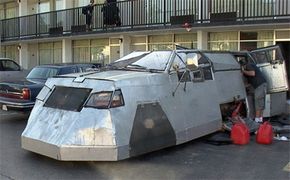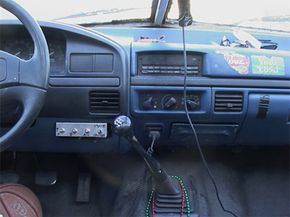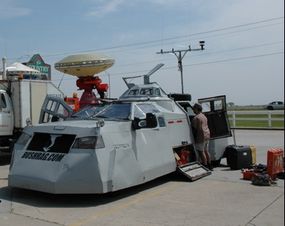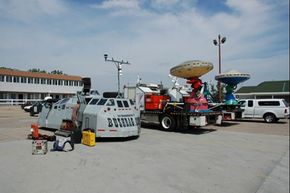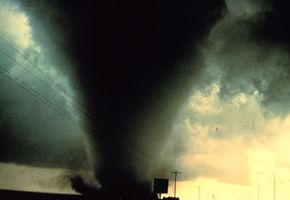Key Takeaways
- The Tornado Intercept Vehicle (TIV) is a modified Ford F450 designed for close-up tornado filming, armored with steel plating and equipped with a 360° rotating turret for an IMAX camera.
- The TIV's transformation involved reinforcing its structure with steel for protection against tornadoes, including 1/4-inch (0.6-cm) steel plate floors, a skeleton of steel tubing and I-beams and double-layered steel doors.
- Despite its heavy armor, the TIV can reach speeds of up to 90 miles (145 kilometers) per hour, allowing it to safely enter and film inside tornadoes.
Most people -- especially those living in the American Midwest -- know how to boost their chances of surviving a tornado. First, get into a basement or a storm cellar. If that's not possible, hide in an interior, windowless room, preferably under a mattress or blankets. Never stay in a car or a mobile home -- lying a ditch, while definitely uncomfortable in the middle of a severe storm, is a lot safer.
Some people ignore this advice and become tornado chasers, but even chasers generally stay about a mile away from a tornado -- close enough to see, but relatively out of danger. Anyone wanting a closer look, or to actually get a glimpse of the interior of a tornado, would need a heavy, armored vehicle that could withstand intense winds, debris and hail.
Advertisement
That's exactly what IMAX cinematographer Sean Casey has built with his Tornado Intercept Vehicle (TIV). The TIV is big, heavy and armor plated. With it, Casey hopes to record a direct hit with a tornado and survive.
Read on to learn more about the TIV's armor and instruments, as well as what happens when it encounters a tornado.
Advertisement
